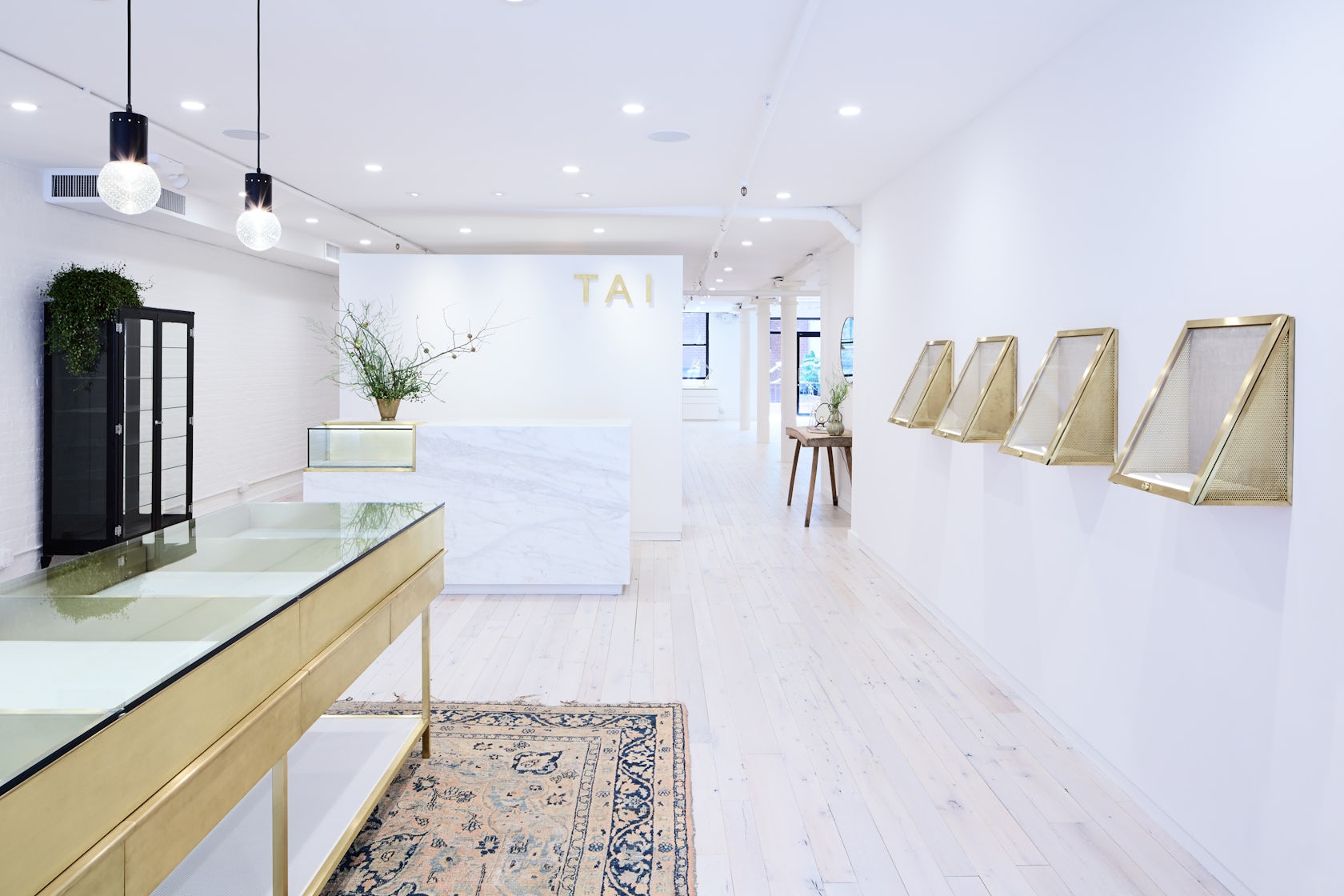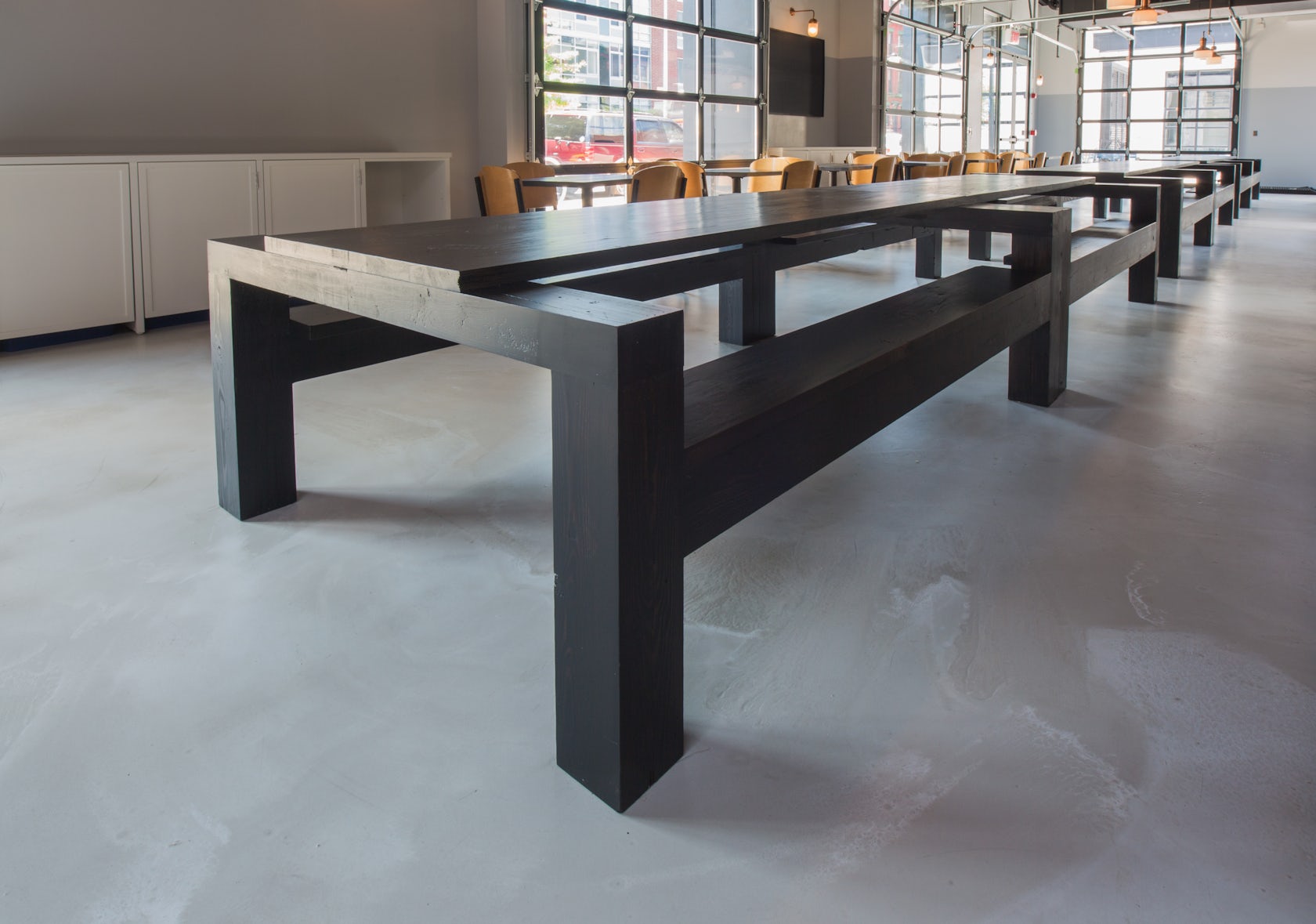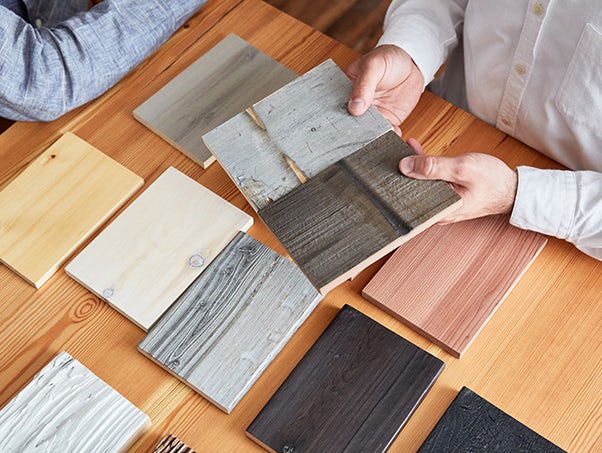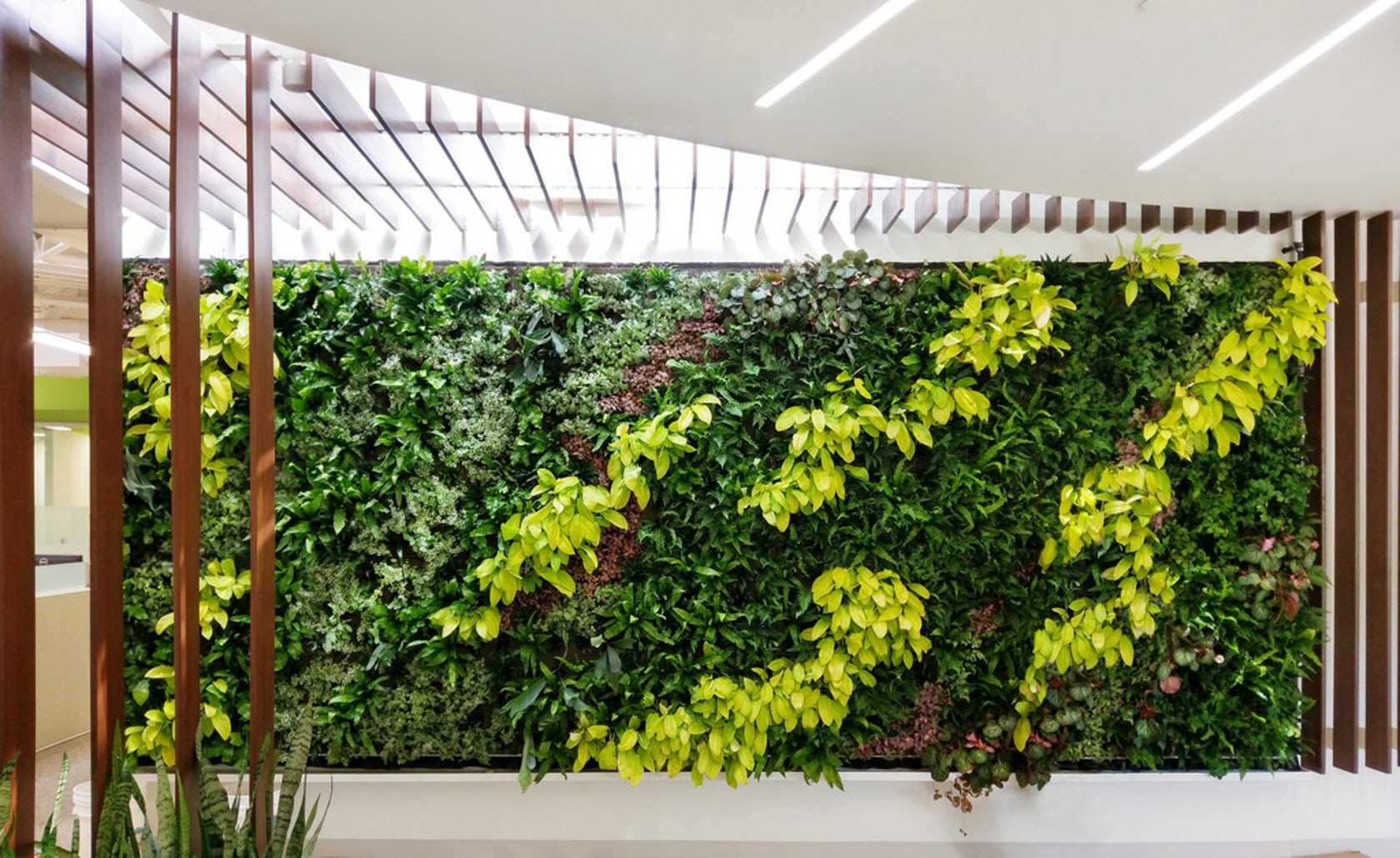Connect with huge architecture firms and gain new business through Architizer’s community marketplace for building-products. Click here for more information.
Salvaged wood products need not be confined to bespoke and small-scale projects. Just because something old is made anew with care and detail, that doesn’t mean it can’t be harnessed for grand spaces in bold, new ways. Tri-Lox, a Brooklyn-based manufacturer that specializes in reclaimed and ethically sourced wood, is educating the design community on the endless possibilities that come with specifying sustainable wood products — things like floors, wall panels and furniture that retain hints of former use but look no less contemporary and polished.
“We want to show a renewed approach to reclaimed wood,” said Alexander Bender, Co-Founder and Managing Partner of Tri-Lox. “A lot of architects and designers, in our experience, think about reclaimed wood in a certain way as a rustic unrefined option, and we’re trying to show that you can have reclaimed wood that comes with all the character inherited from its previous life and still have it be refined, modern and slick.”


Tri-Lox specializes in reclaimed wood products and offers a range of finishes that unveil the wood’s ageless beauty. Top left: Tri-Lox Maple Floor in Natural; top right: Tri-Lox Heart Pine Floor in Neutral; bottom left: Tri-lox Heart Pine in White Wash; bottom right: Tri-Lox Factory Floor Maple
Some recent projects the eight-year-old company has worked on feature such a level of sophistication that the concept of “already used” is far from visible reality. They’ve teamed up with top architects and clients on commercial and residential projects around New York City, gaining commissions by word of mouth, online through their newly revamped website and increasingly through Architizer’s growing marketplace for building-products. By taking advantage of every opportunity that comes their way — no project is too big or too small for Tri-Lox — they’re hoping to enlighten the industry about the potential of reclaimed wood.
“One of our biggest challenges in terms of growth has been awareness within the design community that our products, while being unique in their looks, origins and manufacturing methods, are viable for use on large-scale projects,” said Ellis Isenberg, also a Co-Founder and Partner. “There is a misconception that this type of sustainably sourced material is only available on a one-off or highly limited basis.”

Tri-Lox sources their materials from local water towers and regional agricultural and industrial deconstructions. Though taking materials from these smaller structures might seem difficult to scale, Tri-Lox has curated a process for sourcing consistent materials that can be used on larger commissions.
To shake this issue, Tri-Lox has begun scoring projects — some local, some global — that show off their expertise in mass-producing personalized wood products. One key way they find these leads is through Architizer’s new marketplace for building-products.
“Architizer has provided us with opportunities to connect directly with designers and architects so they know that Tri-Lox products are real scalable solutions for a diversity of applications that carry a significant aesthetic and environmental impact,” Isenberg said.
Promoting a positive environmental impact is a core goal for Tri-Lox as a company. They know that the more popular reclaimed products become and the more such materials are specified, the more opportunity they have to help big building projects achieve healthier and greener standards.

Shake Shack specified a Heritage Oak for their tabletops as well as two types of Cedar and two types of Redwood for their wall paneling in various locations.
For example, Tri-Lox has been helping fast-food chain Shake Shack outfit their new locations around New York City as well as assisting them in planning for international expansion. The team used reclaimed wood from local water towers to produce distinctive feature surfaces for their restaurants. Their deeply textured designs echo the brand’s warm interior style through various types of Redwood, Cedar and Oak.

The new TAI SoHo store features an elegant showroom, a private area for VIP and wholesale clients as well as administrative offices — all including Tri-Lox products.
On a smaller scale, Tri-Lox recently completed a custom project for a jewelry brand’s first New York City boutique store. The new TAI SoHo, designed in collaboration with Carter Design, features a light palette of wood features and a minimalist aesthetic. Tri-Lox crafted wall fixtures, lighted shelves and glass-topped vitrines made of wood, brass and marble that speak to the company’s luxurious but simple line of jewelry. They also used a muted modern finish to pale out their custom wooden floors and achieve a softer, more even tone throughout the space.

Tri-Lox built tables with Heart Pine sourced from a wallpaper factory in New Jersey for a new food and beer hall in Brooklyn.
In 2015, Tri-Lox worked with Selldorf Architects to fabricate their custom-designed wooden furniture for the new, 9,000-square-foot food and beer hall in Brooklyn called Berg’n. They created monolithic communal tables using joinery construction that eliminated hardware and resembled the heavy wood furniture found in traditional German beer halls. This massive project, using wood sourced from a wallpaper factory in New Jersey, showcases Tri-Lox’s ability to create a seamless and uniform look across a series of large pieces.
Whether they’re woodworking for a major tech company, media partner, restaurateur or collaborating on a public art installation, Tri-Lox aims to give clients spaces that speak to their values and goals, which increasingly include authenticity and sustainability, according to Isenberg. In the eyes of the Tri-Lox team, there are no two better words to describe the beauty of sourcing reclaimed wood.

“We want architects to have confidence that we’ve created an infrastructure that can serve large-scale projects,” Bender said. “We try to emphasize that design decisions made at this kind of level truly matter and could have a major impact.”
Tri-Lox was an early adopter of Architizer’s marketplace and continues to be an active manufacturer on the platform. Architizer has allowed them to share their unique approach to woodworking and diverse range of products to a wide audience of architects across the country seeking their specialized services. In using the platform, they hope to further generate conversations about sustainable design and offer effective solutions for all projects — no matter the shape and size.
Gain leads from major firms such as AECOM, HOK and OMA through Architizer’s community marketplace for building-products. Click here to sign up now.
Images courtesy Tri-Lox; photography by Arion Doerr









